Today, the gardeners and landscape designers worldwide have a huge number of a variety of flowering and decorative plants that are used to decorate the household plot and garden. Flowering unpretentious plants are particularly popular, which do not lose their decorativeness over many months. It is to such cultures and treats spirire - a bright and incredibly beautiful culture, which will certainly delight the gardeners with their unpretentiousness, resistant to cold and heat, as well as magnificent and abundant blossoms.
The flowering sprayer shrubs in Siberia are also not uncommon, because these plants perfectly carry harsh winters with strong frosts. But in this case, it is also necessary to be attentive, because among the huge variety of species and varieties of spiries there are quite thermal-loving instances.
In this article, consider the features and description of Spiray, we present the characteristics of the species and varieties of this plant suitable for growing in Siberia. We note important rules and nuances of landing and the departure of Spiray in Siberia.
Features and morphological description of spiria
Spirea is a valuable decorative shrub, which often choose gardeners and landscape designers to decorate household plots. This is due primarily with the multifunctionality of the plant, with its excellent winter hardiness, a pomp flowering and good adaptation to new conditions. It is these qualities that make a spiray of any kind to an excellent solution in landscaping not only in the central part of Russia, but also in Siberia and in the Urals.
Spirea or Tollga is a genus of decorative leaf falling shrubs that belong to the family pink or rose-colored. To date, this plant has gained widespread, lush spirey bushes can be found almost on any continent. The area of \u200b\u200bhabitat of a leafy shrub is considered to be a northern hemisphere with all climatic zones. In total, in the culture, you can count about 90 types of spiries, which, in turn, include a huge number of varieties.
The scientific name of the flowering shrub "Spirea" occurred from the ancient Greek word "Speira", which in translation denotes "bending". There is nothing surprising here, since the branches and shoots of Spirea have flexibility, and during flowering, the shoots are completely covered with flowers, like the arches, giving the plant with a spectacular appearance. In addition, the people there are still other names, which are perfectly characterizing this chop. The most popular peopling name "Bride", which is associated with the moment of shrub blossom in the spring, when the shoots are completely covered with small white flowers. All the plant at this time resembles a gentle wedding lace. However, the resemblance to the wedding dress has only spring-breathing varieties of spiries. Plants that bloom in summer can boast vertical inflorescences of pinkish, red and and white shade.
Spiraray description:
- Spirea is a medium sized decorative leafy shrub, which is very popular with both professional designers and ordinary lovers and connoisseurs of bright and unusual plants.
- The root system of the plant is urine and is located in the upper layer of the soil, in connection with which it is necessary to be careful when the soil is loosened around the bustle.
- Spirea shrubs can be both dwarf and tall. On average, the height of the plant can be from 15 cm to 2.5 meters, which will make it possible to choose the gardener the optimal variety for landing in Siberia.
- The shrub itself is formed by fluttering or spreading branches, reprehensible or lying shoots. Branches can be a light brown or dark shade.
- The spirea branches have a distinctive feature - the bark has a property to extend longitudinally.
- The crown shape in the plant may also be different, it all depends on the specific type and variety of spiries. You can find a plant with a pyramidal form of the crown, with a pyramidal, weeping, whipping and represented.
- The shape and shade of Spiray foliage may also differ and vary depending on the specific variety. The sheet plate can be three-blade or five-bladable, lanceolate or rounded. The color of the foliage about light green to dark green.
- The leaves on the shrub are attached to the cutters, they are located next.
- In the fall, depending on the variety, the leaves can be painted in a variety of shades: yellow, orange, red, brown, burgundy.
- The most important advantage and the decorative value of spiries are flowers that appear on a plant in large quantities.
- Flowers are small, however, it is blooming almost on all shoots and branches, thereby forming a different inflorescences in the form: blurred, ear-shaped, palate, pyramidal. There are also varieties of spirea with single colors.
- The color of inflorescence is not diverse, most often there are varieties with white and cream flowers. For summerturing varieties, pink flowers, raspberry and reddish are also characteristic.
- Different from various types of spiries and the location of the inflorescence. Some are placed along the entire length of escape, other flowers are dissolved only on the tops.
- Most varieties of this culture are distinguished by winter hardiness, so they can grow perfectly in Siberia. In addition, shrubs have proven themselves as excellent city inhabitants - they do not interfere with severe air gas supply.
- Spirea boasts unpretentiousness to care and quickly and painless adaptation to new gravity conditions, for which this plant is valued among the gardeners.
- Thanks to the huge number of shrub forms, colors of inflorescence and flowering time, spirea bushes can be used for a variety of garden compositions: they look good in single landings, in group, in mixed.
Siberi Spiray Grade - Detailed Feature
To date, Spiray varieties have a huge amount and most of them can be grown in the climatic conditions of Siberia. As noted above, spirires can be divided into spring-working and summers, which are primarily characterized by flowering timing. Consider the characteristics and description of the most popular species and varieties of spirea for growing in Siberia.
Spiray gray in Siberia
This is one of the most popular types of spiries, which is a hybrid obtained by crossing the spiraea of \u200b\u200ba hunterobic and grayish-white. In fact, the flowers for this variety are white, with a gray-shade in the busta of foliage. The shrub is high enough and scattered, height can reach about 1.8-2 m. Krone is formed from long, spreading escapes. Lancing leaves, oblong, have a rich emerald color with a grayish tinge on the bottom side of the sheet plate. Little white flowers are collected in shibidal inflorescences that are located along the entire length of shoots. Blossom comes in mid-May and lasts about a month.
Spiriya gray "Greps". This is the most popular hybrid variety of a variety of spirey, which is characterized by a beautiful and lush bush and an excellent winter hardiness. In the height, the bustard of this plant can be about 1.5-2 meters. It is a strawberry shrub with disrupting arched shoots of a reddish-brown shade. Flowers are small up to 1 cm in diameter, terry, collected in umbrella inflorescences that completely cover all shoots. Blossom starts in mid-May and lasts about 30-45 days. There is bloom for the second year after landing.
Spirae Wangutta in Siberia
It is also a hybrid variety of spirey, which was obtained by crossing the spiray of three-bladed and alcohol Cantonese. Like most of the hybrids of this plant, it has excellent unpretentiousness and frost resistance. It is a fairly large shrub, which is height and in diameter can reach about 2 meters. It is formed due to long, spreader, drooping shoots, thickly covered with gears, three-blade leaves. Sheet plate on top of a green shade, and from the back side a little szay. Little flowers up to 0.6 cm in diameter are semi-shaped inflorescences, which are located along the entire length of shoots. Blossom starts in mid-June, sometimes you can observe re-blossom in August.
Spiraea is worn in Siberia
It is a high reprehensive shrub that can reach 2 meters in height. Reddish brown shoots covered with pointed leaves up to 10 cm long. Unlike graffers, the leaves are blighted not from the bottom up, but on the contrary. On the shoots of the current year, pyramid-pitched inflorescences are formed up to 20 cm highs consisting of small pink or white colors. This type of spirea is distinguished by cold resistance and endurance, grows perfectly in Siberia. In the natural environment, it prefers to shave along the shores of the reservoirs.
Spiray Japanese in Siberia
This variety of spirea more rest is recommended for growing in Siberia, as resistant to cold and frost. It is a hybrid variety, which bush can reach a height of 1-1.5 m. The shrub has a hemispherical shape formed tomentose young shoots. Special ornamental shrubs attaches foliage, which has a pink hue from the upper side and the underside bluish. In autumn the whole bush flashes red and orange hues. Spiraea japonica blooms with small pinkish-red flowers, gathered in corymbose-paniculate inflorescence. This variety blooms for about two months.
- Spiraea japonica Little Princess. It represents low bushes, which reaches a height of 60 cm in diameter can grow up to 1.5 meters. Crohn bush rounded and compact. The leaves are small, oval-shaped, dark green color. Flowering variety of spirea in June and July corymbose inflorescences up to 4 cm in diameter, which consist of small red and pink flowers. The variety has a slow growth and good resistance to cold.
- Spiraea japonica Golden Princess. Is a variety of grades of Little Princesses. Honors stands larger sizes - bush can grow up to 1 meter. In addition, the plant is completely covered with yellow foliage.
- Spiraea japonica Shirobana. A small bush height of 60-80 cm diameter crown of up to 1.2 meters. The leaves are small, narrow, lanceolate, dark green. Flowers white or pink flowers bloom in late July or August.
- Spiraea japonica Goldfleym. It represents a short bush 80 cm, which is densely covered with surprisingly bright and leaves. First they have bright yellow-orange hue, after which turn bright yellow, then green and yellow, and in the fall - copper orange. Flowers in a given species are small, reddish-pink.
Spirea dubravkolistnaya in Siberia
Also quite undemanding plant species that can grow easily in any soil, even rocky. The plant is widespread in the Far East and Siberia. Is a low shrub with small green leaves that turn golden in autumn. Blossoms small cream-colored flowers, gathered in the ball-shaped brush. Flowering is not long, it lasts less than a month.
Spiraea Billard in Siberia
Another sufficiently popular type of spiraea, which is suitable for growing in Siberia. This is a hybrid plant, which was obtained by crossing the Douglas alcohol and the solar. It is a fairly high shrub that can grow up to 2 meters. The shoots of thick covered with long, lanceal, dysple leaves, the length of which can be about 10 cm. Little pink flowers are collected in narrow pyramidally-blurred inflorescences up to 20 cm long. This type of seed does not give and multiply only cuttings. It is distinguished by excellent resistance to cold and shades.
Spiraeus reproduction in Siberia: the most common ways
Spirea is valued by gardeners for their unpretentiousness and ease of care and cultivation. In Siberia, as in any other region, this plant can be multiplied by the most in many ways. The following are popular and common: the following: seed reproduction, stalling, reproduction with tanks and the division of the bush. Undoubtedly, each individual view of Spiraia has its own characteristics and methods of reproduction that must be considered. For example, the billard spirea does not block the fruits, therefore it can be multiplied vegetatively. Consider the main characteristics of spiraea reproduction options in Siberia.
Seed reproduction of Spiray in Siberia
- This method multiplies only species spiries, as hybrid species and varieties most often do not tie the fruits. In another case, you can get a plant with completely different characteristics.
- First of all, it is necessary to take care of seeds that are collected from ripened boxes. They must become brown, but do not have time to reveal. They are broken and in the conditions of the room make it possible to ripen for 2 weeks.
- Next, it is necessary to carefully remove the seeds of the spirie, removing the remains of the boxes.
- The germination of natural sources of spirea seeds is quite high and amounts to about 80%. In the process of stratification, they also do not need.
- Prepare a suitable container or box and fill it with peat, which is predefined well moistened.
- Next, make a spiray seed and close the film or glass container.
- Sowing need to put in a warm and bright place.
- When seedlings appear from peat, the film is removed, and the landings continue to grow, watering and airing them.
- When 2-3 leaves appear on seedlings, they are pricked into separate containers.
- When young plants are growing even more, you can plant in open ground. Only to do it, when the threat of return freezers passes.
- Spirea will bloom, grown from seeds, only for 2-3 years.
Spiraeus reproduction in Siberia
- This method of spiraea reproduction is very popular due to its simplicity and efficiency.
- Conduct the reproduction in this way can be in spring.
- To do this, you need to choose lateral and healthy shoots on the plants and burn them into pre-prepared grooves.
- To ensure a faster appearance of the roots, you can make a small incision at the place of contact of escape with soil.
- Next, the grooves are sprinkled soil in such a way that only the tops remain on the surface.
- If you want to get a lot of young seedlings at once, then the tip of the chain must be placed. Thus, every side soil will give a young sprout on the shoot.
- Already in the fall, you can remove the grain and share it on the desired number of young processes with roots.
- After separation, young plants are planted for a permanent place.
Spiraeus reproduction in Siberia Silent
- This method is also very popular with gardeners, as the percentage of rooting is more than 70%.
- Spiraeye shining depends primarily on the time of flowering plants. So, the Rannetic Sorts can be drawn in the first half of June, late driving - in the second half of June or in July. If the reproduction uses withdrawal cuttings, then the procedure should be carried out in the fall, approximately in October or November.
- Choose a straight steady escape on an adult bush and cut it, then cut into the desired amount of cuttings in such a way that each has 5-6 leaves. The length of one cutter should be approximately 8-10 cm.
- The bottom of the leaves together with the cuttings must be removed completely, the rest are only half.
- Next, you need to make small cuts on the bottom of the cuttings and put them into the epin solution or another rooting agent for about 12 hours.
- After that, you can slightly sprinkle the lower knot root.
- Prepare suitable containers or pots and fill them with soil. Root the cuttings at a small angle.
- Boxes need to be left on the plot in a small shade pre-encouraging them with a glass jar.
- 2 or 3 times a day of the cuttings need to spray with water.
- For the winter, the cuttings are cheered on the garden and leave so much until spring.
- The next year, the cuttings will give young shoots, after which they can be resettled at a permanent place.
SPIRIA Landing in Siberia - Phased Description
The cultivation of Spiray in Siberia does not make up special difficulties and depends on the quality preparatory work and the competent market of a seedlock. Proper planting of the plant is the key to its full growth and flowering. Therefore, before landing, it is important to choose an ideal place on the site and buy healthy seedlings. Consider the main stages of landing Spiray in Siberia.
Stage 1. Selection and acquisition of spirea seedlings for Siberia
- One of the most important stages of preparing for landing is the acquisition of high-quality and healthy spirea seedlings, which are primarily suitable for the climatic conditions of Siberia.
- Since Spirea is considered a fairly unpretentious and frost-resistant plant, most of her species and varieties can feel great in Siberia. In any case, it is necessary to carefully read the names of the varieties and the conditions for their cultivation.
- To buy spirea seedlings is recommended only in specialized garden centers or nurseries, which are professionally engaged in breeding plants.
- It is important to carefully inspect the planting material before you buy it. If a spring landing is planned, then the saplings should not be swollen kidneys and leaves. With the planned autumn landing on shoots, there should also be no leaves.
- Special attention should be paid to the state of the spiray root system. If the roots are open, carefully inspect them. They should be elastic, without marking mold and rotting. Even the slightest damage or hearth disease can lead to the disease of the entire plant.
- It is best to buy seedlings in containers, so they can be planted at any time.
Stage 2. Selection of landing sites and soil preparation for Spirea in Siberia
- Next, it is necessary to pick up on its site the most suitable place for landing.
- Spirea is an unpretentious plant that can grow almost everywhere. However, if you want to achieve the most abundant and lush flowering, it is necessary to find a sunny place on its plot. When landing in the shade will not be able to achieve good flowering.
- The selected place should not be in the lowline where the moisture accumulates and cold air is lowered.
- Spirea has a branched rhizome, so it is not worth landing this plant near fruit trees and close to each other.
- Culture prefers to grow on fertile, nutrient, light soils that are well missed oxygen.
- If the planting is planned in the spring, then it is recommended to drain and fertilize the soil in the fall. To do this, at the peroxide, you can deposit both complex mineral fertilizers and natural organics.
Stage 3. The process of landing Spiray in Siberia
- Sports of spirea seedlings can be both in spring and autumn. It all depends on the time of flowering the specifically chosen variety. If the plant blooms in the spring, then it is better to plant it in the fall. When landing in Siberia is best done at the end of August or in September. If late-driving varieties are planted, it is best to choose the spring time of the disembarkation.
- Before boarding, it is necessary to prepare landing pits. This is usually done a couple of days before the seedlings landing time.
- The depth of the landing pit should be about 60-70 cm, the width should be determined by the variety and the size of the root.
- When preparing a nam, it is important to remember about the distance that you need to leave when disembarking several seedlings. If it is planned to plant a living hedge, then the distance between individual bushes should be 30-50 cm. For separately growing seedlings, 80 cm is enough, for tall varieties it is necessary to leave at least 1 meter.
- Place the Drainage layer on the bottom of each pit, which can be used by a broken brick or clay.
- If a seedling with open roots, then before planting them must be placed in a capacity with water for a while. Plants in containers need to be plentifully.
- At the same time, you can trigger the shoots and shorten the roots.
- Mix the soil with mineral fertilizers and pour a piece of nutrient mixture into the pit, building a small hilly.
- Place the seedling on it and sprinkle the soil, carefully sealing the ground with your hands. Form an earthen shaft and plenty of plants.
- Push into the rolling circle of lying mulch from peat.
Spriera Growing Agrotechnology in Siberia: Secrets and Nuances of Care
As noted above, the care of spirires in Siberia is not distinguished by complexity, since this plant will delight gardeners with his unpretentiousness and not capriciousness.
- Watering. Spirea is considered a drought-resistant plant, but in irrigation still needs. Approximately once a month each adult plant should receive 1-1.5 buckets of water. If it is hot, then water should be watered every 2 weeks. Watering should not be frequent, but abundant. In large quantities of moisture, young plants and seedlings, planted in spring need.
- Loosening and mulching. After each watering, the rolling circle must be loosened so that the crust is not formed on the soil. It is necessary to loosen neatly and not deep enough to damage the roots. It is recommended to regularly pour a layer of mulch to keep moisture and create an optimal microclimate.
- Feeding. So that spiries pleased with beautiful bloom, it is necessary to regularly make fertilizers. In the spring, each plant is fertile to nitric mineral or organic fertilizers. In June, the spirire is fed by full mineral fertilizers. In late summer or in the fall, the plant must necessarily be filing with phosphoric-potash fertilizers without nitrogen.
- Pruning spiria. In the spring, it is necessary to carry out sanitary trimming, removing all damaged shoots. Rannune-driving varieties are cut off only the top after flowering, later all shoots are cut into 1/3 of the part. Weak shoots are completely removed. When the bushes reach 7 years, it is possible to carry out a rejuvenating trimming, during which the bustle is cut almost all shoots, except 6-7.
- Spiray preparation for Siberian Winter. Spiree is considered a frost-resistant plant, but immediately after landing and in order to preserve their decorativeness, it is recommended to think about the shelter. First of all, the branches of the plant are associated together and flex to the ground, after which they are poured by foliage.
Spirea in Siberia - Photo
Spirea is a beautiful and very decorative plant, which is very popular with gardeners. This is especially true of growing in Siberia, where not every culture can grow and blossom. However, Spirea has long established itself as an unpretentious and stable plant capable of blossoming even in a short summer of Siberia.

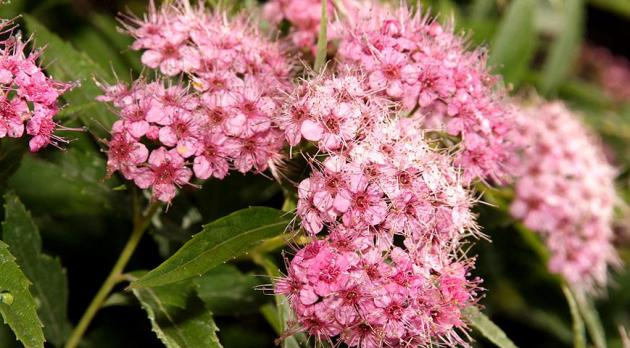



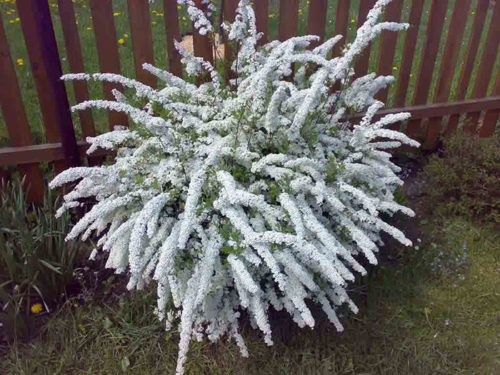
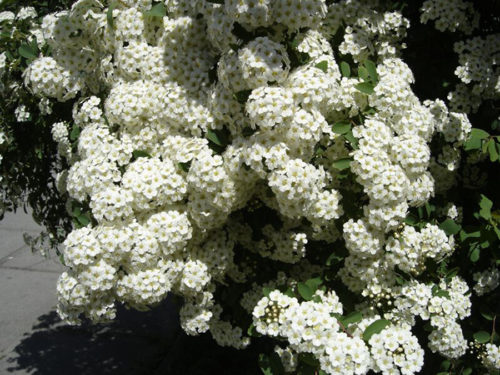
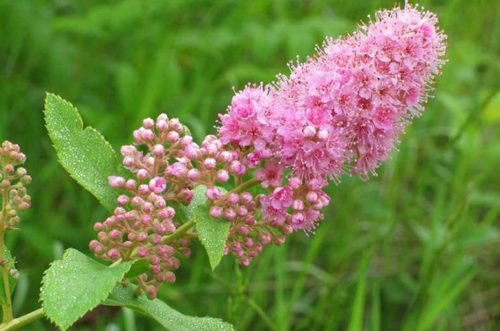
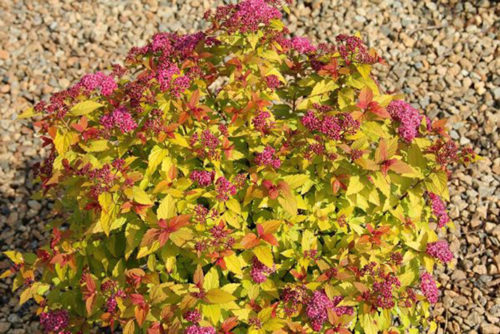
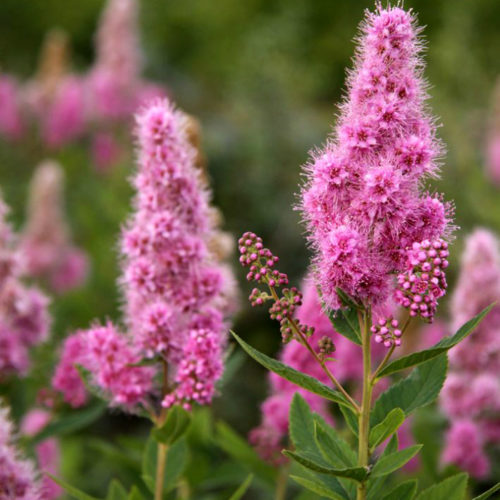
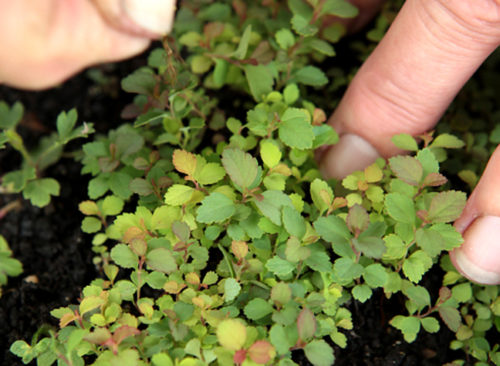



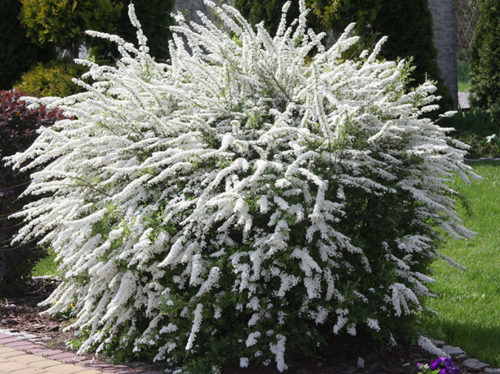


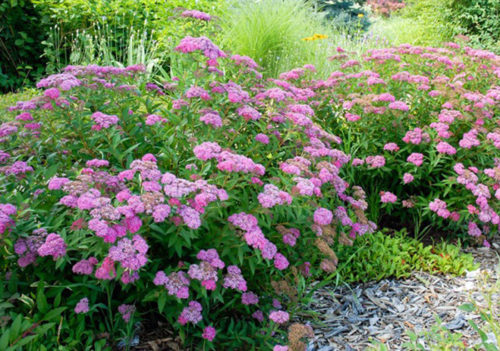
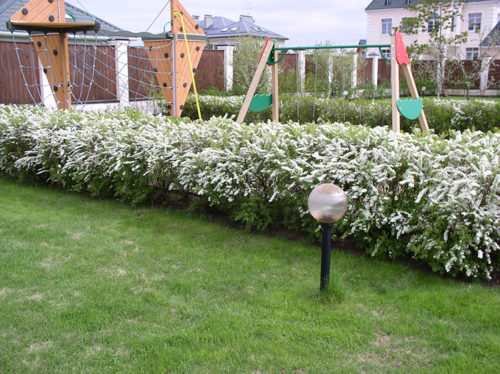












 Start a discussion ...
Start a discussion ...